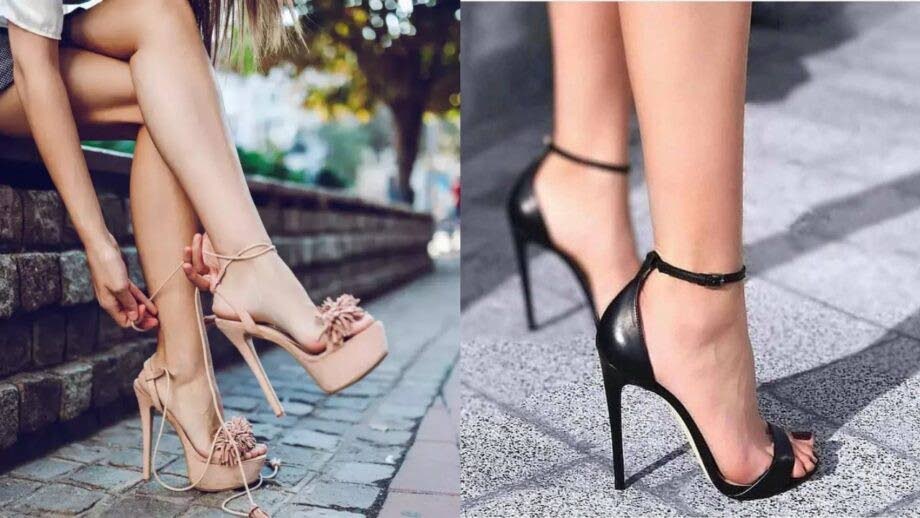The health hazards of high heel shoes

Dr Maxwell Adeyemi
MANY girls and women feel they can conquer the world with the right pair of “platforms.”
However, wearing high heels three or more times a week can lead to a harmful imbalance in the muscles of the feet which in turn can lead to deformed feet, back pain, unhealthy walking patterns, and possible joint problems and diseases in the future.
A woman’s body will attempt to compensate for the off-kilter balance that high heels cause by flexing or forward bending the hips and spine. In order to maintain balance, the calf, hip and back muscles become tense. At the end of the day, this makes for excess muscle fatigue and strain.
Over time, wearing high heels can also cause the calf muscle to cramp and bulge.
The perfect, pointy pair of 4-inch heels can make any outfit, but with this style comes much suffering. High heels have the stigma of being bad for health and comfort, but this barely stops women from wearing them occasionally and often daily.
Women often make sacrifices for foot fashion, but usually at a price. Studies have shown that these towering shoes can be costly in more ways than one, taking their toll on your spine, hips, knees, ankles and feet, while altering your posture and gait.
KNEES:
Teetering around in stilettos throws the body forward and puts increased pressure on the inside of the knee. Sometimes this pressure can be up to 26 per cent or more. The higher the heel, the more pressure there is on the front of the knee and foot, one-inch heel exerts 22 per cent, two inches exerts 57 per cent and three-inche heels exert 76 per cent pressure. This can lead to arthritis, the painful degenerative joint disease in the knee.
The calf muscles naturally contract when you walk in high heels. However, long term wear can cause them to shorten and tighten permanently; leading to pain in the ball of the foot or knee, hip or back pain.
ACHILLES TENDON:
High heels put pressure on the Achilles tendon causing it to shorten and tighten. If you wear heels constantly, this can actually shorten the tendon permanently, so that when you wear flat shoes, the tendon become stretched and inflamed, known as tendinitis.
POSTURE ALTERATION:
High heeled shoes place the heels unnaturally above the toes and throws your whole body, your hips, shoulders, back and spine- totally out of alignment. In the long run this can cause severe lower back and leg pain.
When you put on high heel shoes, a number of things happen;
– The chest is pushed forward
– The lower back is pushed forward, taking the hips and spine out of alignment
– Excess pressure is placed on the kne joint.
– The heels mimic the way a person walks on a “ramp”, increasing the pressure on the balls of the feet through a downward force.
All these causes alteration in alignment and change the biomechanics of your movements in a fashion that can cause future health issues.
ANKLE INJURY:
High heels affect your balance and increase your chance of falling, particularly if you are older or overweight. Injuries can include sprains or broken ankles.
Wearing high heels causes most of your body weight to be pushed forward onto the ball of the foot. This can lead to a condition called Metatarsalgia- pain in the area of the foot just before 5the toes. Age may increase your risk of this condition.
Haglunds deformity- “Pump bump” also known as Haglund’s deformity is a bony enlargement on the back of the heel. It is caused by straps and the rigid backs of pump style shoes rubbing and irritating the heel.

Squeezing feet into ill fitting high heels can cause the toes to curl up to fit the footwear. Eventually the toes, but usually the second one becomes so misshapen they cannot be straightened even when not wearing shoes.
BACK PAIN
The normal S-curve shape of the back acts as a shock absorber, reducing stress on the vertebrae. Wearing high heels causes lumber spine flattening and a posterior displacement of the head and the thoracic spine.
High heel shoes cause you to lean forward and the body’s response to that is to decrease the forward curve of your lower back to help keep you in line, poor alignment may lead to muscle over use and back pain.
FORAMINAL STENOSIS
This is a spinal nerve condition that can occur when anatomical abnormalities block or reduces space in one or more foramina (the hole in the spinal bone).
Foraminal stenosis in the lower back can cause symptoms of shooting pains, in addition to numbness, tingling, muscle weakness, spasm, cramping and pain that radiates through the buttocks and down the legs.
Daily high heel use over a number of years can actually lead to changes in your anatomy.
Spondylolisthesis or slippage of one vertebrae forward over another frequently occurs as a result of wearing high heels especially in the lumbar region of the spine where the body’s weight is concentrated.
The idea is not to throw away or avoid high heels, but to wear them with wisdom and in moderation bearing in mind that they can cause future harms to your musculoskeletal and joint health.
Contact Dr Maxwell on 3631807 or 7575411.


Comments
"The health hazards of high heel shoes"